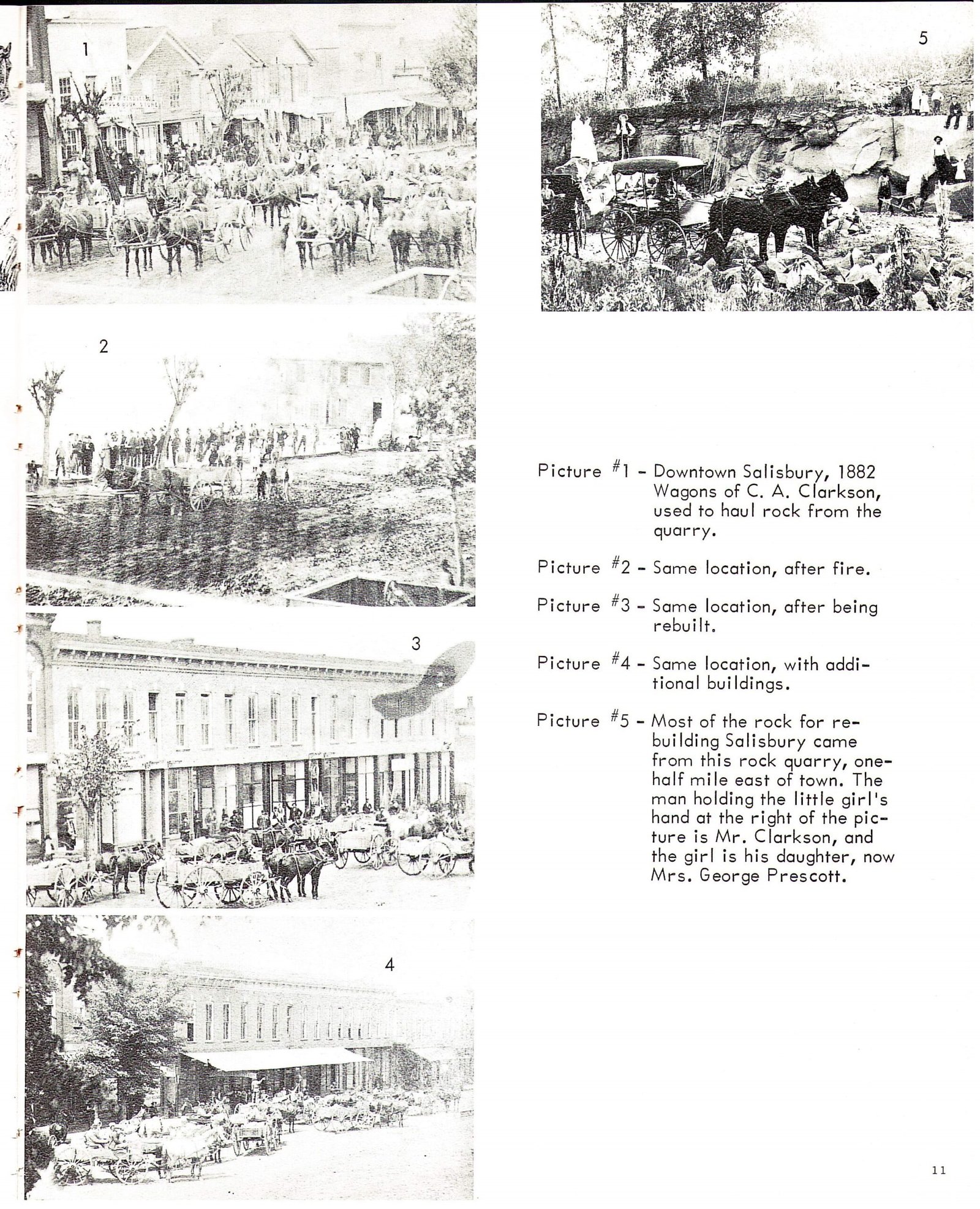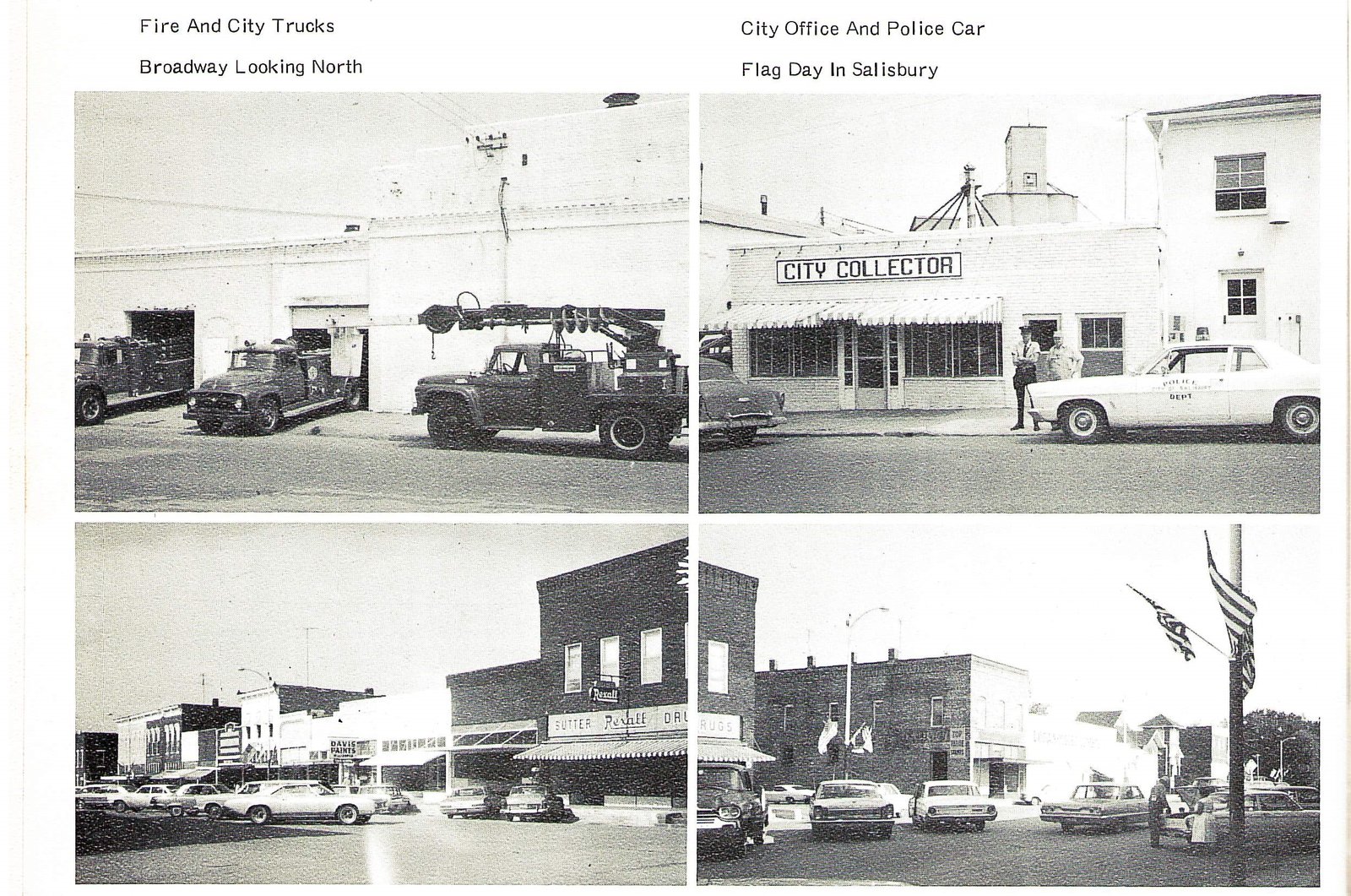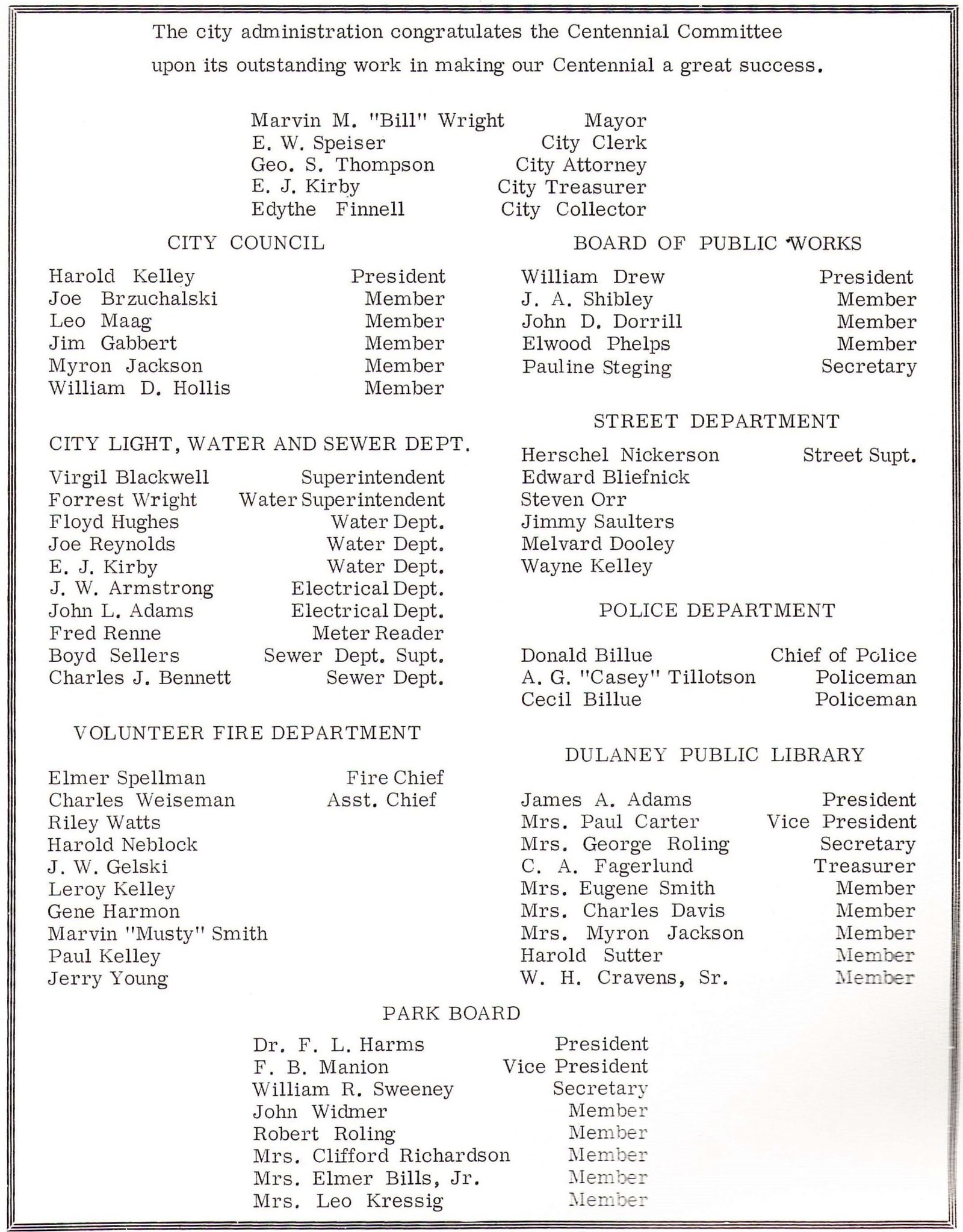History of the City of Salisbury & Ordinances
Welcome to City Hall on 2nd street in Salisbury. Salisbury’s history is comprehensive and has many items of interest, especially in the book of ordinances but time will not allow us to cover all of that today. But how about some interesting information about Salisbury’s beginnings..
Salisbury was officially incorporated on April 1, 1867. But its history goes back much further. The veterans of the War of 1812 were paid off with Louisiana Purchase land. Prior Bibo, a soldier, was given a half-section of land (320 acres), which included the present site of Salisbury. Bibo never saw his 320 acres. He sold it to Dr. John Bull, who resided in 1817 at the new town of Chariton. Dr. Bull later sold the 320 acres to James Bennett, who sold it in 1856 to a young man from Vermont, Lucius Salisbury, for the sum of $400 in gold.
According to the History of Howard and Chariton Counties, published in 1883, “Salisbury was laid out April 1, 1867. Judge Salisbury had been an advocate of railroads from as early as 1850 and had many trials in getting a railroad through Salisbury. Salisbury was able to outbid Roanoke to bring the Chariton and Randolph Railroad into Chariton County. This railroad began building west of Moberly and by 1860 had made it 13 miles towards Salisbury.
In 1858 Judge Salisbury moved to his farm, first erecting a box house as a temporary dwelling. He later completed a frame building containing two rooms on the west side of what is now Broadway and approximately the site of the Kay Quinn home. This house served as a home, Post office and a house of entertainment called “Stop-a-While”. The stagecoach from Glasgow to Macon stopped here.
The town began to develop and was laid out and lots were sold on April 1, 1867. The first lots were purchased by the Dulany family (the family that gave the library to the city). The railroad from Moberly to Brunswick was completed on December 15, 1867.
The Salisbury family provided the Salisbury Centennial Committee many scrapbooks and pieces of history. If you have a chance to grab a centennial book, there is a LOT of information about Salisbury’s beginnings.
In a scrapbook entry from 1877-1887 there is a clipping giving a financial statement of the town for 1877-78 when Salisbury was just 10 years old. It gave the sum of money collected, money expended and money on hand and it totaled $3120. Some of the items of interest were dog tax brought in – $44. Fines brought in $62.50. Licenses were responsible for $1454. They paid a Mrs. Willis the sum of $2.50 for taking care of a pauper and some was paid $50 for moving the calaboose. The trustees had purchased chairs for the town hall for $5.50.
Most of the houses and business buildings were built of wood and in 1877 a fire destroyed 9 buildings. In 1882, Salisbury was again visited by fire, and this destroyed a much larger portion of the town. When the town was again rebuilt, the buildings were all a brick construction and some still stand today. Most of the rock for rebuilding Salisbury came for a rock quarry one half mile east of town.
An item from the Salisbury Bulletin in 1869; offenders of the laws of the corporate limits of Salisbury will take notice that the town trustees have passed an ordinance making a neglect to pay fines for infringing upon the streets, with ball and chain, until such fines are worked out at the rate of 10 cents per hour.
By 1882, the city of Salisbury qualified to be a fourth-class city with a form of government headed by a mayor, if the citizens would give a majority vote for it. The trustees met March 13, 1882, and noted by majority to approve the proposition. In the following month, the enabling ordinance was passed, and the town was divided into two wards. An election was then called for on June 13, 1882, to elect a mayor and other city official, including two aldermen from each of the wards. T.B. Branham was elected mayor. The newly elected aldermen then passed all the enabling legislation necessary for fourth class cities. The census of 1880 showed a population of 908.
By 1897 the town boasted a population of 2500, and the era was referred to in local newspapers as the “era of Good Feeling”. Residents were enjoying peace and prosperity, and Salisbury was being called “The Queen of the Prairie.” It was the largest town in Chariton County and still is today.
Salisbury operated under the original ordinances and 2 wards from 1882 to 1885. At that time a revision session was called, and all existing ordinances and rules were modernized and recodified. The big change came in equalizing representation for the citizens by the creation of a new ward. The boundaries for the 3 wards as set at the time have remained until today.
Some interesting city ordinances from the 19th century include:
Unlawful to hang a gate that when open extends across a sidewalk.
Many ordinances dealt with animals in the city limits. It was permitted but with limits.
Unlawful to refuse help to an officer in apprehending a law violator.
No person shall open a place of business, except for necessity, to sell wares or goods on first day of each week, commonly called Sunday. This section did not apply to a druggist filling a prescription or selling medicines or a milk man or butcher selling meats and the likes not later than 10:00 am.
Unlawful for any dram shop, billiard hall, or ten pin alley to remain open after 11:00 PM.
Unlawful for any railroad train to exceed 6 miles per hour speed within the corporate limits and no crossing shall be obstructed by such trains in excess of 5 minutes.
Unlawful for any boy under 16 years of age, unaccompanied by parent or guardian to loiter or play on public streets or alleys, or around depot or saloons after 9:00 pm without written permission of parent or guardian and for any person under the age of 18 to jump on or off a moving train or to hang on engine, car or caboose.
There is a lot of fun and interesting facts on Salisbury through the years. Way too many to list it all out today but I think everyone should know that Salisbury bought a new city fire truck which was delivered in December of 1955, just in time to rescue Santa Claus from the roof-top of a building in town. He later passed cand and treats to the local children following the heroic rescue.
Salisbury’s population was listed as 1571 people for the 2020 census. It still is governed as a 4th class city with a mayor, 3 wards and 6 aldermen. The city council meets on the 2nd Thursday of each month at City Hall and all meetings are open to the public.
Clue
The Lutheran Church stands proud on 3rd, but it was once not alone. A house of faith is now housing with history a mile long.






